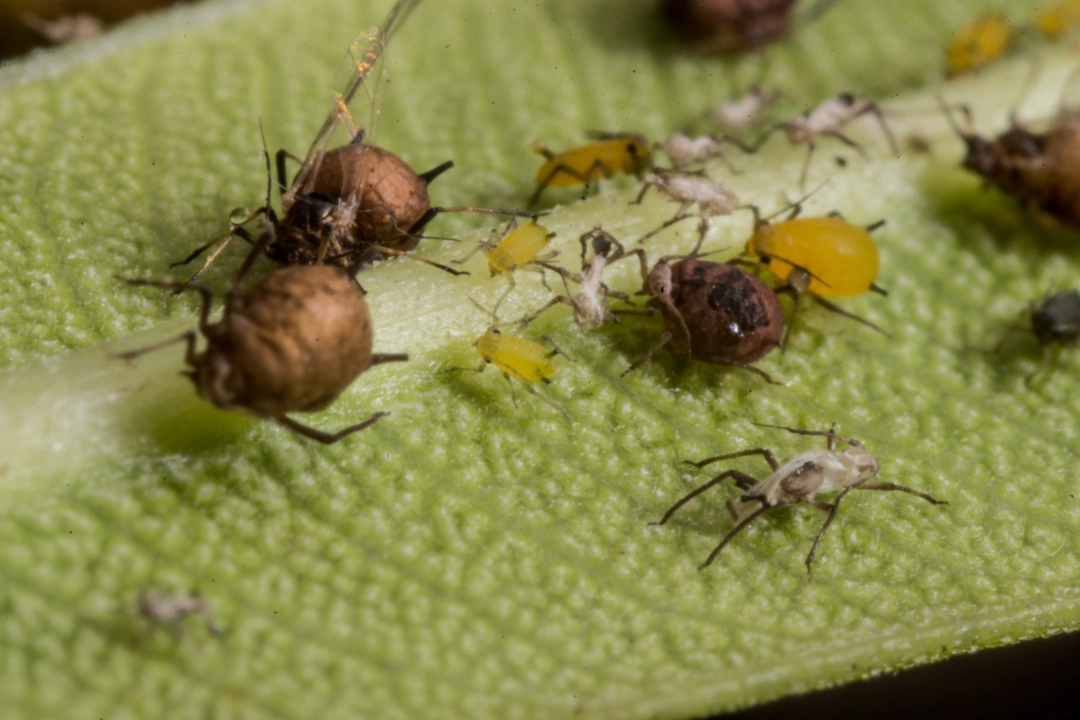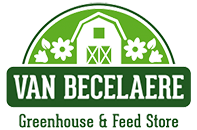Understanding Pest Prevention and Management for Keeping Your Indoor Winter Plants

Posted on January 30, 2024 by Van Becelaere Greenhouse
Pest prevention for indoor winter plants is critical. In today’s blog, we’ll discuss the various types of indoor pests common to the region of southeast Kansas and across the four states, including northwest Arkansas, southwest Missouri, and northeast Oklahoma. In addition, we’ll provide you with tips on preventing and managing these indoor plant pests and where to seek out professional guidance.
Common Winter Pests Affecting Indoor Plants
During the winter months, indoor plants can be susceptible to various pests that can hinder their growth and cause damage. Plant owners need to be aware of these common winter pests and know how to identify them to take appropriate pest control measures.
- In order to combat these pests effectively, it is crucial to identify them early on, which is why routine inspection of your plants can help identify these common house pests:
- Aphids appear in groups huddled together
- Whiteflies are tiny and nearly invisible to the naked eye
- Spider mites form webbing
- Mealybugs gather like cotton clusters
- Scale insects leave scale-like bumps on the leaves
- Fungus gnats have a Y-shaped vein in their wings
Once identified, appropriate control measures can be taken, which may include using organic insecticidal soaps or oils specifically formulated for indoor plants or employing natural predators like ladybugs (note: How to distinguish a ladybug from an Asian lady beetle?) to control aphid populations.
By being aware of these common winter pests that affect indoor plants and identifying them accurately, plant owners can take proactive steps toward maintaining healthy and thriving indoor greenery throughout the colder months.
Aphids
Aphids are another common pest that affects indoor plants during winter. These tiny insects stay close to their food source and rarely fly, but they come in various colors, such as green, black, or brown, and cluster on new leaf growth or the underside of leaves. Aphids suck sap from plants, causing stunted growth and distorted foliage.
Whiteflies
Another sap sucker is the whitefly. These tiny flying pests can make a grown person look ridiculous, flailing their hands and arms to shoo away this nuisance pest nearly invisible to the naked eye.
Spider Mites
The spider mite is one of the most common indoor plant pests during winter. These tiny pests are difficult to see with the human eye but can cause significant damage by sucking sap from plant leaves, resulting in yellowing and wilting foliage.
The most common indicator of a spider mite infestation is the visual appearance of fine webbing on plant leaves and stems. The webbing is a protective shelter and is evident upon closer inspection. Additionally, you may notice small yellow or white specks on the leaves, which are the mites themselves.
Mealybugs
Another common pest is the mealybug, which appears as small white cotton-like clusters on plant stems and leaves. Mealybugs feed on plant sap and can weaken plants over time.
Scale Insects
Scale insects are also prevalent during winter months. They appear as small, oval-shaped bumps on stems and leaves, often resembling scales or shells. These tiny bugs feed on plant sap and excrete a substance called honeydew, which is also known for attracting ants and promoting the growth of sooty mold.
Fungus Gnats
Fungus gnats are a nuisance for indoor gardeners, especially during winter. These tiny flying insects are attracted to moist soil and decaying organic matter, making potted plants an ideal breeding ground.
Ensuring a Pest-Free Environment for Your Indoor Winter Plants
In conclusion, creating a pest-free environment for indoor winter plants is crucial to their health and well-being. By taking proactive measures and implementing strategies, you can protect your plants from these common indoor pests that thrive in colder temperatures.
Firstly, maintaining proper hygiene is essential. Regularly inspecting plants for signs of an infestation is critical to catching pests early. Also, periodically clean your plants’ leaves and remove any fallen debris, dust, or dead plant matter, eliminating hiding spots for pests and preventing infestations.
Secondly, monitor the humidity levels in your home. Pests like spider mites and aphids thrive in dry environments, so consider putting a tray of water near your plants to increase humidity levels. However, some plant bugs love moisture, like fungus gnats. If you are battling both aphids and fungus gnats, talk to the experts at Van Becelaere Greenhouse or stop by to speak with a knowledgeable staff member at their Pittsburg, Kansas, storefront.
Thirdly, regularly inspect your plants for evidence of bug activity. Look out for yellowing leaves, sticky residue on the leaves or soil, webbing, or tiny insects crawling on the plant’s surface. Early detection allows prompt treatment and prevents pests from spreading to other plants.
Furthermore, consider using natural pest control methods such as:
- Neem Oil
- Insecticidal Soaps
- Yellow Sticky Traps
These organic solutions are safe for plants and the environment while eliminating pests. Lastly, isolate any infested plants to prevent the spread of pests to healthy ones. Quarantine affected plants until they are treated and free from pests.
Following these guidelines and ensuring a pest-free environment for indoor winter plants will allow you to enjoy healthy and thriving greenery throughout the colder months. Remember that prevention is vital regarding pest control, and staying vigilant can assist you in taking proactive measures to protect your beloved indoor garden.
